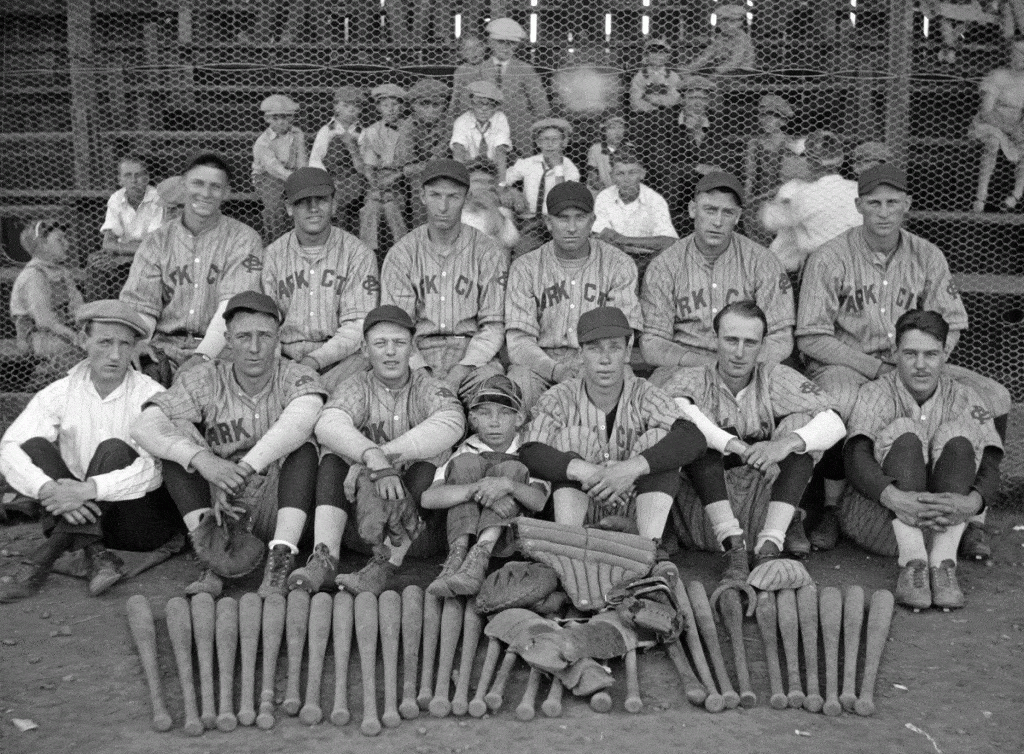In their book accompanying the Smithsonian traveling exhibit ¡Pleibol! In the Barrios and the Big Leagues / En los barrios y las grandes ligas, which the Park City Museum is currently hosting from now until December 18, Margaret N. Salazar-Porzio and Adrian Burgos, Jr. posit that “locally, baseball served to string communities together. Games brought out families, neighbors, and friends to foster support networks and community ties.”
This sentiment fits Park City quite well. Baseball was a favorite game of Parkites, and often brought the community together. For example, after the Great Fire of 1898, the Park Record advocated for Parkites to support a baseball team by contributing money to buy uniforms, bats, and balls, as well as fix the grandstands. Games could also act as fundraisers for rebuilding businesses.
Specifically with baseball’s influence on Latino people, Salazar-Porzio and Burgos, Jr. write “traditions for hometown teams have been particularly strong in both urban and rural spaces with large Latino communities throughout” the U.S. Similarly, Harold Seymour wrote in Baseball: The People’s Game that baseball brought mining communities – often a mix of immigrants from many places – together, making the hometown field an important centerpiece for camaraderie, pride, and entertainment.
In Park City, teams from various mines and fraternal organizations put on great shows of skill, fun, and athleticism for the rest of the communities. Eventually, a hometown team that cherry-picked players from the different club teams competed against opponents from across the state, sometimes also drawing in or venturing to teams in other western states.
One matchup even brought in a “bloomer girls” team from back east. Bloomer girls teams featured squads made up of majority young women who would challenge hometown teams made up of men. The team that came to Park City beat the Parkite team led by star player Tom “Cap” Ryan 7-2.

Credit: Park City Historical Society & Museum, Pop Jenks Collection
Salazar-Porzio and Burgos, Jr. note in their book that “workers in agriculture and industry in the United States used baseball as a means to make ends meet and as a socially acceptable space to find community and organize for rights and justice. That is certainly true for the women on bloomer girls teams who used the field as a way to exhibit athleticism by women in a world that did not believe a woman could be feminine and athletic, tough, or strong.
In the same breath, Salazar-Porzio and Burgos, Jr. relate that “in the United States and Latin America, baseball and softball provide a field for people to reach a better future.” That is true in Park City, where many mines (who needed strong and athletic workers) recruited ball players, who would be guaranteed a job and a team to play on. The Silver King Mine brought “Cap” Ryan from Salt Lake City to Park City, where he became a top performer on the field and one of town’s most popular figures.
The Park City Museum is hosting several events to coincide with the aforementioned exhibit. On Tuesday, November 8 from 5 to 6 p.m. Dr. José Alamillo will give a zoom lecture titled “The Other Field of Dreams: Latino Baseball Project.” Register to receive the Zoom link here. The Museum will host a childrens’ and family program called “Bingo at the Ballpark” where participants can learn about famous Latino and Latina baseball and softball players, and complete baseball puzzles, design your own baseball card, and make origami baseball bats, balls, gloves, and jerseys between rounds of bingo (prizes available – including free tickets to the Museum). The event is from 1 to 4 p.m. on Saturday, November 12 at the Museum’s Education and Collections Center at 2019 Sidewinder Drive. There will also be two Free Days at the Museum while the exhibit is up – on Saturday, November 19 and Saturday, December 17.